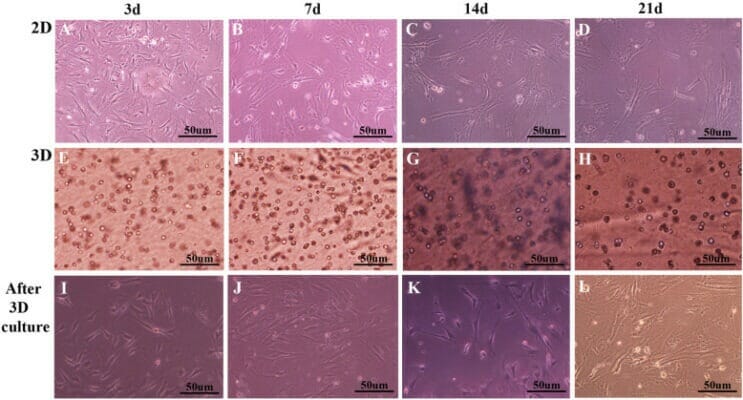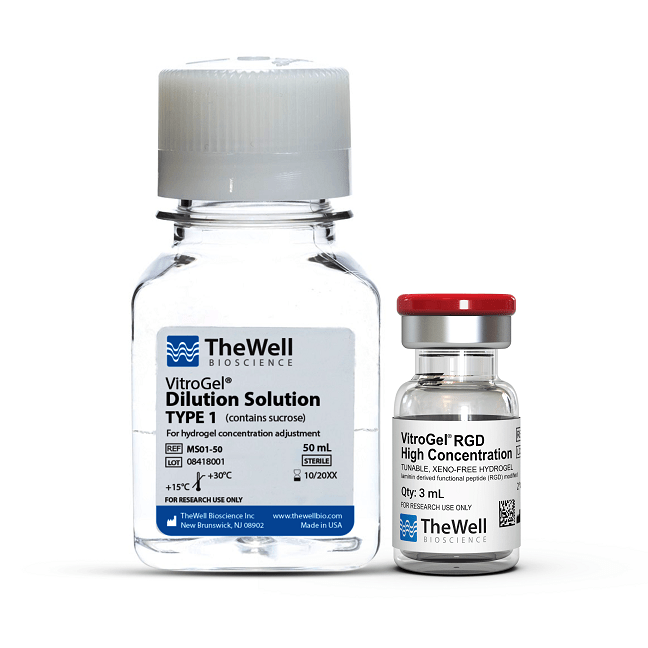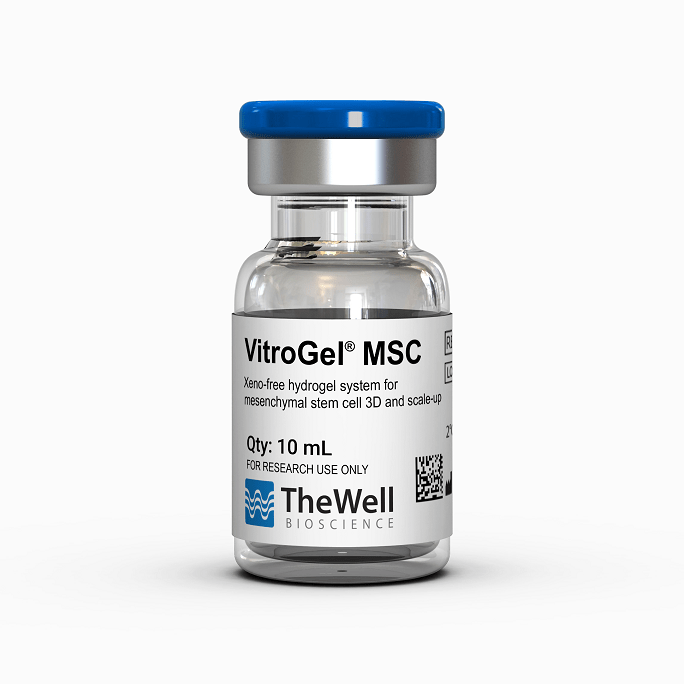Research Highlights
Comparison between 2D and 3D Cell Cultured Adipose-derived Mesenchymal Stem Cells

Institution:

Cancer Center at the First Hospital of Jilin University
Team:
Qiliang Yin, Na Xu, Dongsheng Xu , Mingxin Dong, Xiumin Shi, Yan Wang, Zhuo Hao, Shuangshuang Zhu, Donghai Zhao, Haofan Jin, and Wensen Liu
Application:
In vitro models of adipose-derived mesenchymal stem cells
Disease Model:
Adipose-derived mesenchymal stem cells (ADMSCs)
Hydrogel:
VitroGel® RGD
In recent years, ADMSCs have been shown to promote revascularization, activate local stem cell niches, reduce oxidative stress, and modulate immune responses. However, therapies utilizing ADMSCs often require ex vivo expansion to generate large quantities of cells required for patients. To obtain adequate quantities of ADMSCs for therapeutic applications, extensive in vitro expansion is required. Under current two-dimensional (2D) approaches, ADMSCs rapidly undergo replicative senescence, and cell growth is impeded, and stem cell properties are eliminated by mechanisms that are poorly understood. Therefore, ADMSCs are prone to senescence and are difficult to maintain during long-term 2D expansion. Consequently, efforts have led to the development of novel approaches to recreate more physiologically relevant environments in the form of three-dimensional (3D) culture. 3D microenvironments encourage MSC growth and differentiation into hepatocyte-like cells, in the presence of growth factors. Additionally, the utilization of 3D culture techniques circumvents issues surrounding altered cellular properties of extensively expanded MSCs. In this study, the researchers investigated senescence-related changes in mesenchymal stem cells (MSCs) isolated from human adipose tissue in 2D and three-dimensional (3D) cultures. They utilized our hydrogel system to create a pragmatic ECM and mimic in vivo development of their cells.
Their results showed improved changes in cell morphology, proliferation, differentiation abilities, and energy metabolism of ADMSCs cultures in 3D. Based on their data, there is critical evidence that 3D culturing exerts positive effects on senescence-associated changes. Telomere length and telomerase activity of ADMSCs decline with aging, but maybe improved by 3D culture, further confirming that 3D culturing exerts positive effects in delaying senescence in ADMSCs. Additionally, the study showed that 3D culturing protects mtDNA in ADMSCs from aging-related impairments, suggesting that 3D cultures improve aging-related mitochondrial dysfunction. These results indicate that 3D culture of MSCs could increase cell yields, enhance differentiation, maintain stemness, and provide promising strategies for MSC expansion on an industrial scale, with great potential for cell therapy and biotechnology.
Read the publication:
Related Products:



